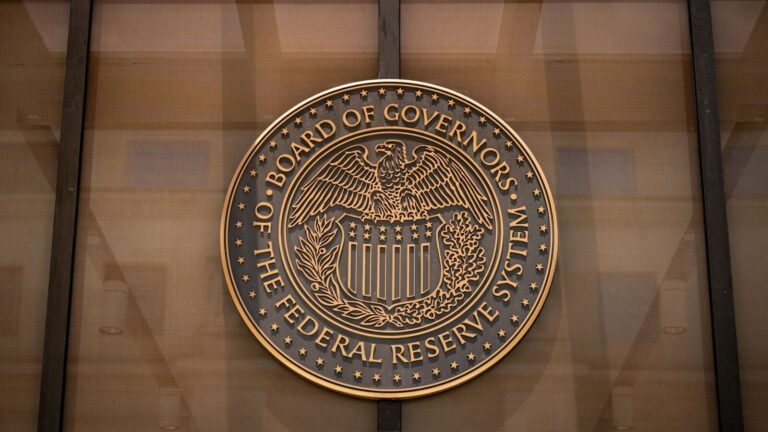US Fed Meeting: Even as markets have largely priced in the possibility of a status quo on interest rates by the US Federal Reserve, investors are keen on picking up signals from Chair Jerome Powell’s commentary that rate cuts may not be far off and could begin as early as September.
The US Federal Open Market Committee meeting is underway, with the outcome due later today, July 30. The US Fed’s next policy meeting is scheduled for September 16-17.
At this juncture, the Fed may maintain the federal funds rate in the 4.25 per cent to 4.50 per cent range, given the uncertainty over how the tariffs announced by US President Donald Trump will affect the economy — even as Trump continues to mount pressure on Powell to lower rates.
“A rate cut by the Fed is unlikely today. More important would be the Fed commentary on the evolving economic outlook. The FOMC decision today is unlikely to impact the market,” said VK Vijayakumar, Chief Investment Strategist, Geojit Investments.
Let’s take a look at five key factors that will influence the monetary policy decision of the US Federal Reserve on July 30:
1. How is the growth?
In its June policy meeting, the Fed revised its economic growth forecast, highlighting the risks associated with Trump’s tariffs. The central bank projected GDP growth of 1.4 per cent in 2025, down 0.3 per cent from the March meeting.
The US economy did contract by 0.5 per cent in the first quarter this year, but the world’s largest economy is not showing signs of significant stress at this juncture.
In fact, the International Monetary Fund (IMF) on Tuesday raised its estimate for the US economy this year and next year.
The IMF has raised its US growth forecast to 1.9 per cent for 2025 and 2 per cent for 2026, an increase of 10 basis points (bps) for 2025 and 30 bps for 2026. The IMF said tax incentives for corporate investment in the recent tax bill are also expected to boost growth slightly next year.
Of course, the Fed will have its own assessments, which will be the bedrock of its policy decisions.
2. The resurfacing spectre of inflation
The Fed cannot ignore the sticky inflation in the US. The US Consumer Price Index (CPI) rose to 2.7 per cent in June from 2.4 per cent in May. Experts expected the June CPI to be 2.6 per cent.
The Fed’s preferred inflation gauge, the Producer Price Index (PPI), however, declined to 2.3 per cent in June from 2.7 per cent in May. June PPI came below expectations of 2.5 per cent.
Nevertheless, inflation in the US remains above the central bank’s long-term target of 2 per cent.
At this point, the Fed cannot be sure that inflation will ease sustainably given high uncertainty over Trump’s tariff policies.
The US has finalised trade deals with several countries and is actively engaged in negotiations with other major economies, including India and China, for a conclusive agreement.
However, the key point to keep in mind is that despite these trade deals, tariff rates on imports to the US may remain high, in the range of 15–20 per cent. This is likely to influence inflation trends in the US.
3. Resilient jobs market
So far, the US jobs market has remained resilient. However, June US job openings and hiring data indicate signs of weakness.
US JOLTS (Job Openings and Labor Turnover Survey) data from the Bureau of Labor Statistics showed that job openings dropped by 2,75,000 to 7.437 million in June, compared to the expectations of 7.510 million.
In May, the US JOLTS data showed 7.71 million job openings — the highest since November 2024.
There are apprehensions that the job market is yet to see the real impact of the tariffs, as Trump extended the tariff deadline for many countries to August 1.
4. Financial market conditions
US stocks are trading near record highs, while the dollar and bond yields have been largely stable, barring occasional profit booking.
The current financial market conditions do not warrant the Fed to bite the bullet and cut rates.
5. Evolving tariff situations
The Fed wants to wait for more data before moving ahead with rate cuts. At this juncture, there is significant uncertainty about how the tariff war will evolve in the coming days.
Despite trade deals, the element of unpredictability in President Trump’s policies cannot be overlooked.
Experts also warn that the tariff policies could cause lasting damage to the US economy. Trump’s tariffs remain a key variable in the Fed’s monetary policy considerations.
Read all market-related news here
Read more stories by Nishant Kumar
Disclaimer: This story is for educational purposes only. The views and recommendations expressed are those of individual analysts or broking firms, not Mint. We advise investors to consult with certified experts before making any investment decisions, as market conditions can change rapidly and circumstances may vary.
